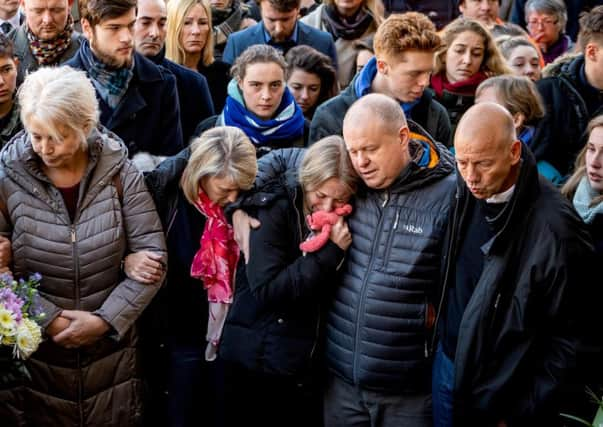London Bridge terror attack: Is professional naivety about terrorists putting public at risk? – Dr John J Marshall


It’s a dreadful prospect to imagine the families being told about their loved ones who were killed by an apparent lone-actor terrorist, especially when the victims had applied such good faith to champion the underdog. We now know Usman Khan wielded a knife to attack those who tried to facilitate the rehabilitation of people like him and other bystanders at London’s Fishmonger’s Hall and then went on to London Bridge. It is impossible to process the families’ horror and the indelible shock to their lives.
For those who survived, there is a highly personal and traumatic experience to comprehend and, as with all traumatising experiences, it can result in a range of consequences for the individual and their families. Beyond the medical interventions, victims of terror often experience normal reactions such as the intense need for reassurance for their safety and need to come to terms with feelings of anxiety and anger.
Advertisement
Hide AdAdvertisement
Hide AdPsychologists in the forensic field try to understand the idiosyncratic victim responses to terror compared to other types of violence and assist services in assessing the threat posed by racialised individuals. Any victims who lack social supports, confiding relationships, or who have previous emotional problems will need more professional help. However, it is now known that helping victims use their own networks of encouragement, if they have them, not professional ones, is more effective in the long run.
Terrorism has specific impacts on victims over and above routine violence because the impact is widespread. The chaos just after a terror attack can cause a great deal of psychological disturbance among victims, along with the violence they witnessed. Victims become the centre of often unwanted attention and media outlets need to tread carefully the line between getting their story out and considering potential adverse psychological impacts. In this case, anger about how on earth a tagged and known terrorist attending a conference as part of his rehabilitation could be so dangerous has been palpable.
The fury about releasing a known terrorist is understandable. The facts of lone-actor terror threat assessment do not make comfortable reading. There are highly specialised forensic risk and threat-assessment systems that try to differentiate between individuals who are likely to be pledged and committed to these heinous crimes versus those who are mulling over deviant sprawling rants online only, but never act on them. Yet in this case, the perpetrator was already a known terrorist. If released automatically, then no thoughtful risk assessment process would have been conducted. In assessing the risk of terrorists, relying on their word, letters, or self-report would be a perilous strategy indeed.
Duped the authorities
Yet lone-actor terrorism is preventable, like other acts of targeted violence, through early recognition and reporting of concerning behaviour. Intelligence services and police are not trying to find some frothing madman online. However, in the case of Islamist extremists, they are male, younger, often not in close intimate relationships, and previous offenders or, if not, they are likely to have displayed hostile and aggressive behaviour.
Only around a quarter have some form of mental health problem or substance misuse issue. Mental health is not a key driver in terrorism, but the psychological processes involving attitudes which capture and propel them are vital. It is the intersection of what we would view as suicidal thinking and racialisation that makes them dangerous. As in this case, they become fixated with a radical ideology despite others’ best efforts. For intelligence services and police, interest in fundamental Islamist violence and specific attitudes that justify the use of force are key. Families or friends of those who hold or display these attitudes must report them.
It’s tough to identify those who have never acted before as their obsessive ‘grievances’ do not have to be logical or rational, sometimes only making sense to the perpetrator. But the focus, in this case, may become how someone duped professionals and authorities into believing they are no longer an imminent danger to others, safe enough to attend a conference. The programmes or interventions that are aimed to de-radicalise lack good research evidence to show they are useful. The psychological mechanisms involved in radicalisation and extremism are highly complex, evolutionary and profound, impacting pervasively on the lives of those captured by the twisted message.
The violent goal commitment and zealousness that dominate the minds of lone-actor terrorists are not ideas they can be easily counselled or shifted out of, and it would be naïve of professionals to think this is doable in the way they might work with other prisoners or offenders. Treatment programmes for people like this perpetrator, such as the Desistance and Disengagement Programme, are not well constructed to take account of the complexity of how racialisation occurs and are poorly evaluated.
Textbooks written for professionals in this field take a super-optimistic ‘holistic’ stance about ‘reintegration’, yet we don’t know if rehabilitation attempts even work. Absolutist ideological, dogmatic and violent ideas don’t budge easily.
Advertisement
Hide AdAdvertisement
Hide AdFor the victims, the least that can be done is to take apart the decision-making trail of release and monitoring – the perceived level of threat balanced against the forlorn hopes of the professional ‘therapeutic relationship’.
Over-optimism and naivety in thinking redemption and rehabilitation is always possible with terrorists and that can lead to the misconstruing of the actual danger posed.
Dr John J Marshall is a consultant clinical & forensic psychologist
